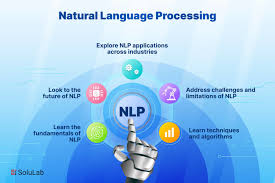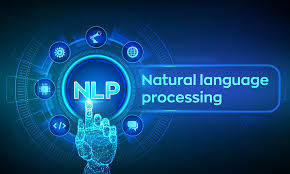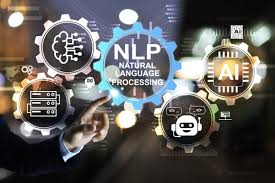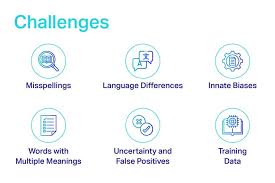How Natural Language Processing
Fellow researchers, remember that the magic that facilitates the existence of the conversational agent, whether it is Apple Siri, ChatGPT of OpenAI, or Google Assistant, and so on, is Natural Language Processing or NLP, to shorten out. Driven by the potentials of NLP, such systems are able to not only analyze, reason, and decompose human expression, but even generate language that sometimes sounds, well, human.
I would like to describe, in pedagogically accurate words, how the Natural Language Processing (NLP) works, how it is behind the every-day examples like ChatGPT and Siri, and why it is one of the most powerful sub-fields of artificial intelligence (AI) in 2025. Now, to start with, the higher level architecture of NLP systems will be taken into consideration. Majority of modern architectures assume layered: A simple input in raw textual forms is encoded into numerical forms on the first level, the representations on this level are acted on to obtain meaning in the second level, and the acquired meaning is used in the third level to understand the meanings in downstream processes. may be illustrative here.
Consider, we provide a system with the sentence composed of the words: Throw me a lifeline, which is instantly converted into a vectorial embedding space. In the processing layer of the middle, we can compute semantic relations among the elements of vectors, say, syntactic consistency between the words of thrust and lifeline. It is at the interpretation level that we finally find the system wrapping its analysis with a structured form that is specific to the target task. In reality, such stratified architectures come gracefully to scale, lexicon size aside.
In addition to this procedural outline, two concern in current NLP study deserve mention:
(1) complex interplay of structure and lexicon
(2) pursuit of robustness to semantically underdefined input.
The first difficulty depends on an old argument about the relatively greater significance of syntactic compared to lexical hints in the comprehension of sentences. The latter difficulty indicates that in natural environments, utterances are commonly underdetermined semantically,
e.g., uttering the invitation to talk, say, Let us speak, could merely mean that the interlocutor has a question she wants solved by the other parties, and systems should be able to survive such underdeterminacies.
🔍 What is Natural Language Processing (NLP)?
On observing the field of NLP in the wider context of artificial intelligence, we find that the field of NLP focuses on interface between computational system and language that is used by biological agents such as humans. Put in other words, NLP empowers the machines to be able to follow conversation, extract and manipulate, as well as glean responses to written texts or spoken messages in a form that is both meaningful and executable.
To provide an example, when you ask Siri, the question, What is the weather today? or key it into ChatGPT as the prompt, Summarise this article, the NLP model reads what you type and triggers a response that makes sense.
🧠 How NLP Works: Breaking Down the Process
NLP works through several key stages:
1. Text Preprocessing
Before understanding the input, the system needs to clean it up. This includes:
-
Tokenization: Breaking down sentences into words.
-
Stop Word Removal: Removing common words like “is,” “a,” “the.”
-
Stemming and Lemmatization: Reducing words to their base or root form.
2. Syntax and Semantic Analysis
-
Part-of-Speech Tagging: Identifies verbs, nouns, adjectives, etc.
-
Parsing: Analyzes sentence structure.
-
Named Entity Recognition (NER): Recognizes names, locations, dates.
3. Context Understanding
Transformer-based architecture is an important part of modern systems of natural language processing like ChatGPT-4o and the neural core transacting Apple Siri. Such models are very good at deriving context, emotion and inferring intent, all of which are essential in generating meaningful responses.
4. Response Generation
After the input is being handled, the system outputs. The conversation could be a voice response (Siri) or text response (ChatGPT). Deep learning models make sure responses are natural and apropos.
🤖 NLP in ChatGPT: The Brain of the Bot
Fellow workers, ChatGPT is based on large Language Models (LLMs) like GPT-4o of OpenAI. Such systems are trained on billions of words and are trained using books, websites, forums among other resources. They represent current Natural Language Processing methods, using transformer architecture.
🔹 Context Awareness
In using ChatGPT, it is found that this is not in any way a system which only is guided by one-off lexical clues; instead, it can be narrowed down to the ability of this system to interpret an entire dialogue chain and to remember previous prompts in the same session and to tone down and adjust the structure of the responses to match the rhetoric paradigm of the user.
🔹 Sentence Prediction
In the existing literature on natural language processing, a most recent model called transformers and attention blocks has been observed, which allows programming systems like ChatGPT to predict what word should come next in a sentence. The ability to speak and understand coherently and intelligibly in a conversation depends on this mechanism.
🔹 Fine-Tuning and Reinforcement
The new generation of ChatGPT by OpenAI has used a combined strategy to integrate traditional supervised learning with Reinforcement Learning with Human Feedback (RLHF). This type of architecture is set in such a way that the outputs are not only more accurate, contextually appropriate, and less prone to misguided associations.
🗣️ NLP in Siri: From Commands to Conversations
Apple’s Siri started as a rule-based voice assistant, but over the years, it has integrated deep learning NLP models to improve:
🔸 Voice Recognition
Siri uses Automatic Speech Recognition (ASR) to convert your voice into text. This is the first step before NLP can kick in.
🔸 Intent Detection
If you say, “Remind me to call mom at 6,” Siri uses NLP to understand:
-
The action (set reminder)
-
The subject (call mom)
-
The time (6 PM)
🔸 Contextual Memory
With newer Apple silicon chips and enhanced machine learning models, Siri can now retain recent interactions, allowing for more context-aware responses.
🧩 Key NLP Technologies Behind ChatGPT & Siri
1. Transformers
The breakthrough architecture behind GPT and BERT. Transformers enable better parallel processing, context retention, and long-range dependencies in text.
2. Word Embeddings
Words are converted into vectors using models like Word2Vec, GloVe, or fastText. This helps machines “understand” word meanings and relationships.
3. Attention Mechanism
This lets models focus on the most relevant parts of a sentence when generating output—essential for producing coherent and relevant replies.
4. Sequence-to-Sequence Models
Used in both ChatGPT and Siri to convert input sequences (questions/commands) into output sequences (answers/responses).
📲 Real-Life Use Cases of NLP in ChatGPT & Siri
| Use Case | ChatGPT | Siri |
|---|---|---|
| Answering Questions | Conversational, explanatory replies | Quick, fact-based responses |
| Setting Reminders | Needs plugin/app integration | Built-in voice-to-action system |
| Text Summarization | Highly accurate summaries | Not supported (as of now) |
| Voice Command Handling | Needs microphone input + plugin | Seamless voice control |
| Contextual Conversations | Multi-turn memory and adaptive tone | Limited multi-turn memory |
📉 Challenges of NLP in Virtual Assistants
While NLP has come a long way, it still faces challenges:
-
Ambiguity: Words like “light” can mean brightness or weight.
-
Sarcasm and Humor: Hard to detect unless context is clear.
-
Code-Mixing: Many users mix languages (e.g., Hinglish).
-
Bias and Toxicity: Trained models may inherit biases from data.
Both ChatGPT and Siri are being continuously improved with bias mitigation techniques and inclusive training datasets.
🧪 NLP in 2025: What’s New?
The NLP landscape in 2025 is rapidly advancing with:
-
Multimodal NLP: Understanding images + text + audio (e.g., GPT-4o).
-
Personalized NLP Models: Tailored to individual behavior/preferences.
-
Privacy-Preserving NLP: On-device processing to protect user data (Apple leads this).
🧠 Fun Fact: Siri vs. ChatGPT in NLP Scope
-
Siri is task-oriented and works within Apple’s app ecosystem.
-
ChatGPT is open-domain, meaning it can talk about almost anything—from solving math problems to writing novels.
Both use NLP but serve different goals.
🔮 The Future of NLP in Assistants
Expect voice assistants to become more:
-
Conversational (understand slang, emotions)
-
Proactive (suggest tasks before being asked)
-
Integrated (control your smart home, emails, work apps)
With models like GPT-5 or Apple’s on-device language models, the line between human and AI conversation will blur further.
Advanced Techniques in NLP That Power ChatGPT and Siri
1. Transfer Learning and Pretrained Models
Over the past few years, a number of potentially gamechanging tools have been outstanding in their work, mainly, ChatGPT and Siri, and the major portion of their success is promoted by the implementation of the transfer learning practice. Instead of training every system on the ground up, scientists would use a variety of pretrained models which have been optimized on large datasets including Common Crawl, Wikipedia, and various repositories of books.
Example: GPT Architecture
ChatGPT is a large step in the field of computational linguistics. Presented in the framework of the Transformer family and, more precisely, in the versions of GPT (Generative Pretrained Transformer), the system first learns the regularities of human language by predicting which word is most likely to come next in a sequence. Fine- tuning later allows the model to focus on a specific task, like answering questions or writing formal essays, that is quite specific.
Siri’s Use of Transfer Learning
Conduct me to clear up a misunderstanding that rises often when we talk about Siri. Despite the fact that, similar to other virtual assistants, Siri uses the natural language processing, it is significantly distinct in terms of the specialization level of the tasks. Also, instead of using end-to-end models, which can produce long-form response, Siri uses retrieval-based solutions: offering the user with pre-written responses obtained through Apple corporate knowledge base. The engine still, however, has classical stages of NLP, including intent recognition, which is driven by pretrained encoders like BERT or, in a more proprietary nature, by in-house options of Apple.
2. Attention Mechanisms: The Game Changer
The Attention Mechanism, introduced in the Transformer model, revolutionized NLP by allowing models to “focus” on relevant parts of a sentence rather than reading it sequentially.
Why Attention Matters
For example, in the sentence:
“The trophy doesn’t fit in the suitcase because it is too small.”
Is “it” referring to the trophy or the suitcase?
An attention-based model looks at the relationships between all words and figures out contextually that “it” refers to the suitcase. This context tracking is crucial for pronoun resolution, a major challenge in NLP.
3. Conversational Memory in NLP Systems
ChatGPT
ChatGPT is token based memory architecture. Simply speaking, it keeps whatever can fit into a given limit Usually 128 k tokens in case of GPT-4. This is a boundary, which augers well into the platform to be able to bear continued, situation-sensitive discourse. The system is not in any way persistently storing information across sessions with no explicit configuration, but does provide a reasonably realistic emulation of natural human memory in the sense of short-term temporal dynamics.
Siri
In the present academic literature in the field of artificial conversation systems, Siri has already been discussed as a typical example that shows both the potential and the dangers of modern understanding of natural language. In particular, conversational capability of the system is often described as limited to single-turn, shallow-context dialogues. Subsequent changes to the fundamental structure of Siri, however, have attempted to push back these limits, with addition of support of multi-turn dialogs and retention of historical context information. As an example, the following sequence can be considered: the user asks what the weather is going to be like tomorrow and then, not offering a direct replacement of the topic, he asks what another day will be like a few days later; in this case, the system will show its capability to reuse the content of the first query as the element of response deployment.
4. Emotion and Sentiment Detection
Modern NLP models are also capable of detecting sentiment and emotional cues in user input. This can lead to more empathetic and helpful interactions.
ChatGPT
ChatGPT is trained to be polite, neutral, and supportive by identifying sentiment and adjusting tone accordingly. It won’t mock or get angry; it’s designed to de-escalate tense conversations and remain calm.
Siri
Apple has experimented with emotion-aware computing, especially in accessibility tools, but Siri’s sentiment processing is relatively rudimentary compared to LLMs.
5. Voice to Text and Text to Speech Integration
Siri relies heavily on speech recognition and text-to-speech synthesis to interact with users, making it a classic use case of NLP married with speech processing.
Speech-to-Text (STT)
When you say “What’s the weather?”, Siri’s STT engine converts the audio signal to text. This text then goes through NLP pipelines for intent recognition.
Text-to-Speech (TTS)
Once the answer is generated, Siri uses neural voice synthesis to turn the response back into human-like speech. Apple’s latest neural voices offer high naturalness and emotional tones.
ChatGPT, especially when integrated into ChatGPT Voice, uses OpenAI’s Whisper (for STT) and custom neural voices for high-quality TTS, mimicking a natural conversational partner.
6. Real-Time Personalization
Both Siri and ChatGPT benefit from user data (within privacy limits) to personalize experiences.
-
Siri can remember your name, calendar events, reminders, and preferred apps.
-
ChatGPT, when memory is on, can remember preferences like tone of writing or specific formats.
This personalization is driven by Named Entity Recognition (NER) and context modeling, core NLP tasks that identify and track real-world entities like people, places, and times.
Challenges in NLP for ChatGPT and Siri
Despite the rapid evolution of NLP, there are still several challenges:
1. Ambiguity
Natural language is inherently ambiguous. Consider:
“I saw the man with the telescope.”
Who has the telescope? The model must deduce context, which isn’t always obvious.
2. Factual Inaccuracy
Generative models like ChatGPT may hallucinate — confidently providing incorrect or made-up answers. Siri avoids this by using curated databases, but that limits flexibility.
3. Bias in Training Data
Both Siri and ChatGPT can reflect biases present in their training datasets. Researchers constantly work to mitigate these through bias detection, reinforcement learning, and red-teaming.
The Future of NLP in ChatGPT and Siri
1. Multimodal Capabilities
With the rise of multimodal AI (understanding images, audio, and text together), NLP will expand into more sensory-rich interactions. ChatGPT-4o already shows this, enabling users to talk, show images, and interact in real time.
2. Better Memory and Long-Term Context
Apple and OpenAI are both exploring ways for their assistants to remember things over long periods, securely and privately, to improve continuity and personalization.
3. On-Device AI and Privacy
Apple focuses on on-device processing to keep NLP tasks private and secure. Models are now running directly on iPhones. Expect Siri to become smarter without needing constant cloud connectivity.
OpenAI may follow with lightweight LLMs on edge devices, enabling secure NLP processing.
📘 Summary
Friends, I would like to remind you that Natural Language Processing (NLP) is the part of the engine, which drives AI tools like ChatGPT and Siri. It supports systems that not only interpret inputs of the user but also adopt the ramparts of generating responses in a way that cannot be distinguished as being conversing as a human would. Nevertheless, despite the ChatGPT being streamlined to wide open dialogue and content production, Siri is explicitly focused on action and voice control.
Moving into the future, NLP is bound to be developed further in the directions that make the digital interactions even more human, contextually sound as well as intellectually receptive, thus, helping to create more seamless human-computer interactions, in general, and more intuitive human-computer interaction, in particular.
Conclusion
Fellow colleagues, what can we do but take a step back and look at the technological framework that supports the first intelligent conversation that you interact with using ChatGPT and voice-based interaction that is represented by Siri. The natural language processing acts as an engine that drives these systems further which helps it to process grammar, semantics interpretation and allows real-time personalization and an expressive voice synthesis. To conclude, the humble assistant has grown into a sophisticated AI companion on the way to which NLP keeps evolving and improving.
This is because the next steps concerning improvements in this domain will be connected to further architectural advances, specifically improvements and new levels of precision models, advanced attention mechanism, and multiple modalities unification. Therefore, we should expect ChatGPT and Siri to achieve even more power and intuition and become more like fluid dialogue that is a quality of a human conversation. The communication between language and machine, a phenomenon that used to be a preserve to speculative fiction, has indeed turned out to be one of the characteristic attributes of digital existence today.
Apple iPhone 17 Series (iPhone 17, 17 Air, 17 Pro, 17 Pro Max)






